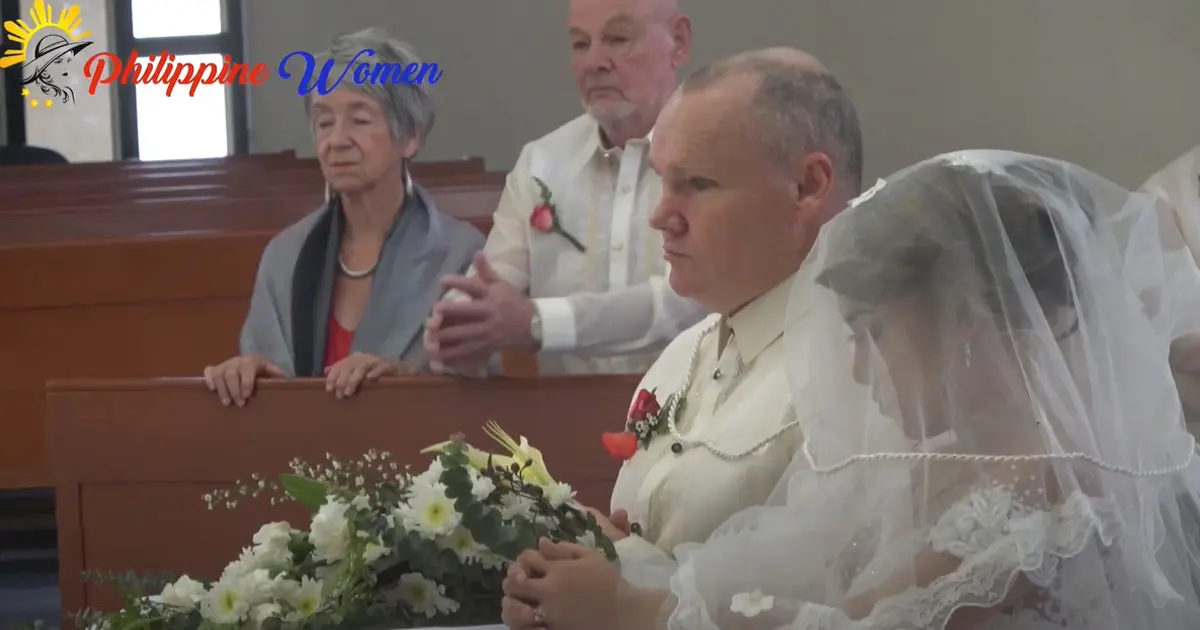Trends come and go, while traditions can last lifetimes.
When it comes to a Filipino wedding, many progressive thinkers prefer to put a modern twist on it while keeping relevant religious and cultural conventions. It’s their celebration, after all.
And because the Philippines is an archipelago, you can’t put Filipino weddings in a box. Each place has its own customs.
If you’re planning one for yourself, here’s a guide to tying the knot the Filipino way.
Precolonial Weddings in the Philippines
Before diving into current wedding norms, let’s discuss precolonial nuptials.
Precolonial wedding ceremonies in the Philippines were elaborate. According to the Business Mirror, festivities typically last for three days.
The bride and groom would visit a priest or babaylan (shaman). They would carry a plate of raw rice in exchange for a blessing.
Two days later, the officiate would prick the chests of the couple to draw a small amount of blood. The bride and groom would then declare their love three times. Afterward, the couple would eat cooked rice served on the same plate they brought on the first day and drink some of their blood mixed in water.
The officiate would then bind the couple’s hands and necks with a cord, signifying they are officially married.
Modern Filipino-themed Wedding
Spain colonized the Philippines for over 333 years. Their missionaries wanted to use the country as a stepping stone to spread Christianity in Asia (Pascual 2023). While that goal failed to materialize, they were able to embed their religious beliefs in the country, with Catholicism becoming the predominant religion today.
With this, modern Filipino weddings are a mix of indigenous and Spanish practices, from ceremony to attire.
Filipino Customs Before Vows
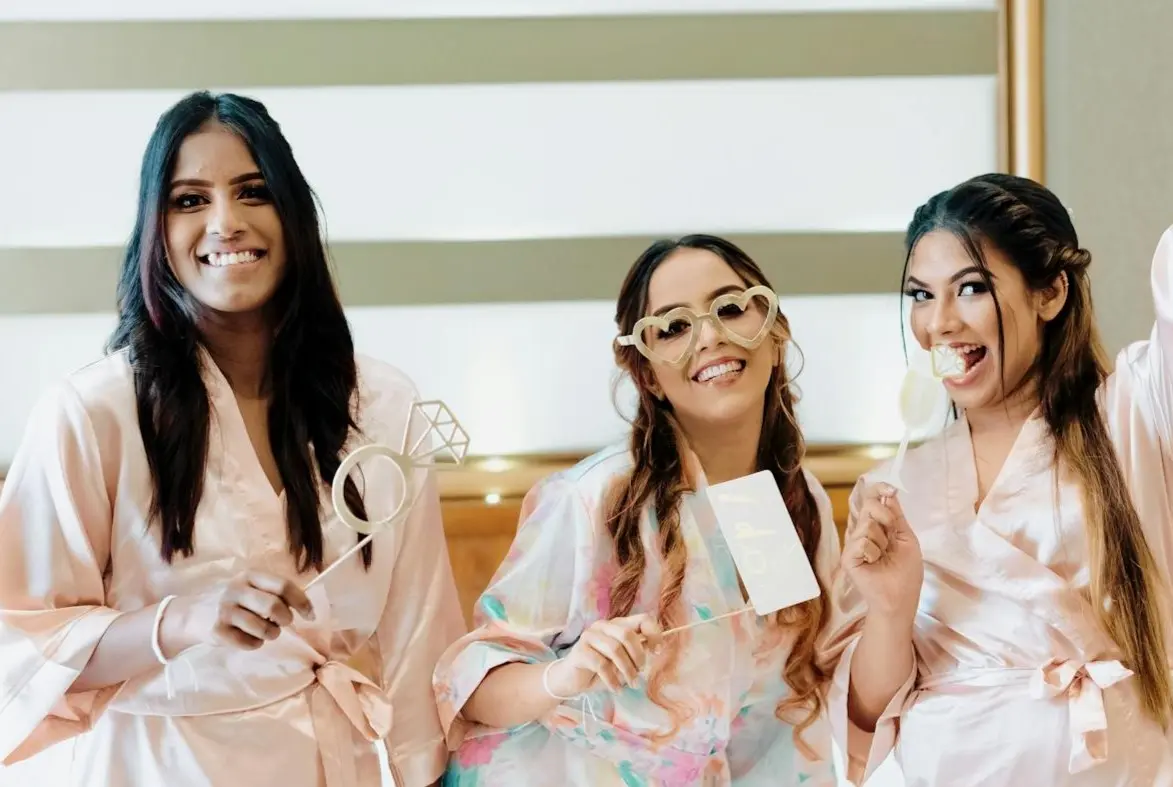
Most Filipinos choose to observe a few traditional pre-wedding customs. Some may find these inconvenient, but many follow them anyway. Some are superstitious and want to err on the side of caution, while others find that these customs add charm and beauty to the occasion.
Below are a few common Filipino pre-wedding traditions that remain today:
1. Pamamanhikan
Per tradition, a Filipino wedding begins with this custom. Pamamanhikan comes from the word panhik (to climb). It literally means "to ascend a house’s stairs."
In the context of Filipino weddings, this practice refers to a man formally asking to marry a girl in the presence of both their families.
This event usually happens weeks or months before the wedding. It starts with the guy asking a girl’s parents for their daughter’s hand in marriage. Once they get approval, he and his family visit the girl’s house for a formal meeting.
The meeting traditionally begins with introductions, which are especially applicable when both families haven’t met each other. Once everyone’s acquainted, discussions regarding wedding fundamentals (dates, venues, expenses, etc.) commence.
If a man strictly follows old-school traditions, he’d do paninilbihan (servitude) before pamamanhikan. This servitude consists of household chores like water fetching and firewood chopping.
Nowadays, most families don’t deem paninilbihan necessary in modern times. Similarly, pamamanhikans are no longer what they used to be; they’re now considered engagement parties.
2. Wedding announcements
The couple personally hands out a Filipino wedding invitation to the people they want to invite to their celebration. Extended families are almost always on guest lists.
Moreover, elders and relevant community members are usually godparents or Filipino wedding sponsors, coming with refreshments or gifts. Not only do they provide financial support for the wedding party, but they also offer overall guidance.
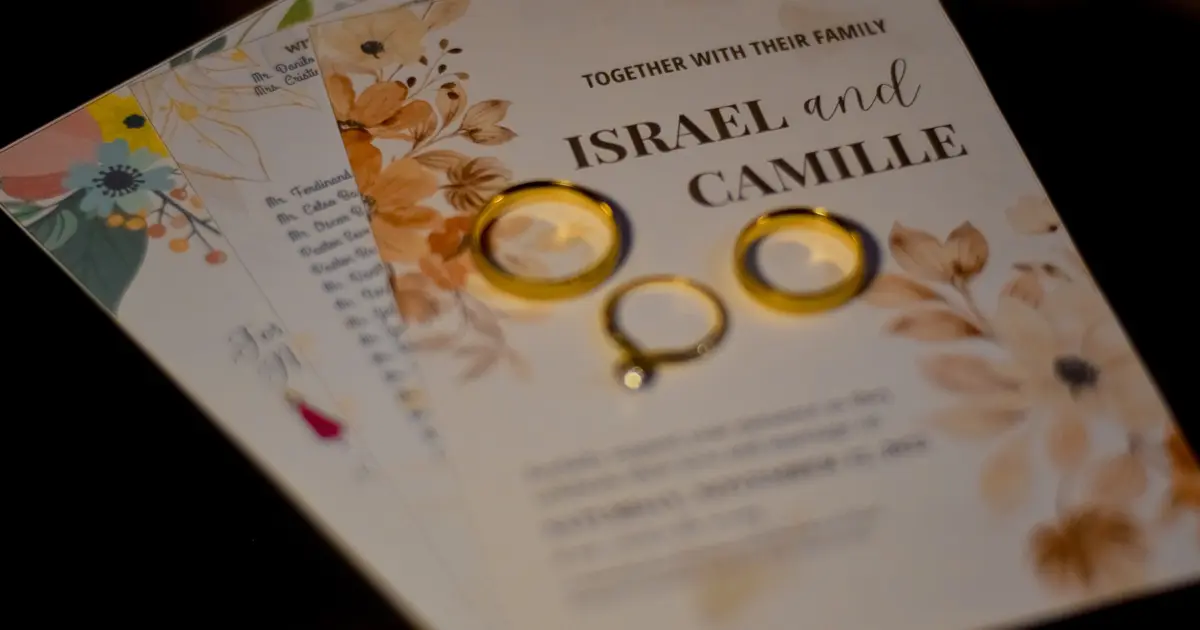
3. Bulungan
Bulungan has a literal translation of “whispering.” But this pre-wedding tradition ensures that the couple and their families hear each other's wishes for the ceremony.
The practice usually takes place at the bride’s house. Both their families gather and make wedding plans. Superstitious people plan in a whispering voice to keep bad luck and spirits at bay.
4. Despedida de Soltera
This Spanish phrase means “farewell to singlehood.” A despedida de soltera is the Filipino equivalent of a bridal shower for brides or a bachelor party for grooms, which happens a few months before their weddings.
A bride’s friends are in charge of preparing bridal showers. On the other hand, a groom’s best man is responsible for throwing bachelor parties. Both soirees are gender-exclusive and celebrate the last day of singlehood.
Traditional Filipino Wedding Attire
Are you lost on what to wear on your wedding day in the Philippines? The following descriptions should help you picture the traditional Filipino wedding clothes for brides and grooms.
The Bride
What is the quintessential Filipino wedding attire for the bride?
For tradition-loving folks, the Filipiniana is the pinnacle of Filipino wedding dresses. This traditional outfit consists of a butterfly-sleeved blouse and a matching skirt.
Nowadays, brides have become more adventurous with their dress choices. The modern Filipino wedding dress comes in various styles, from two-piece outfits to sleek jumpsuits.
The Groom
Men usually wear Filipino barong tagalog for their wedding. It's a long-sleeved, intricately embroidered, and neutral-colored shirt usually made from piña (pineapple fiber) or jusi. Grooms wear it over a white collarless undershirt, which they leave untucked.
However, modern grooms prefer wearing an amerikana (three-piece suit) instead of a barong to a Filipino wedding. Since its rise in the 1920s, this outfit hasn’t gone out of style.
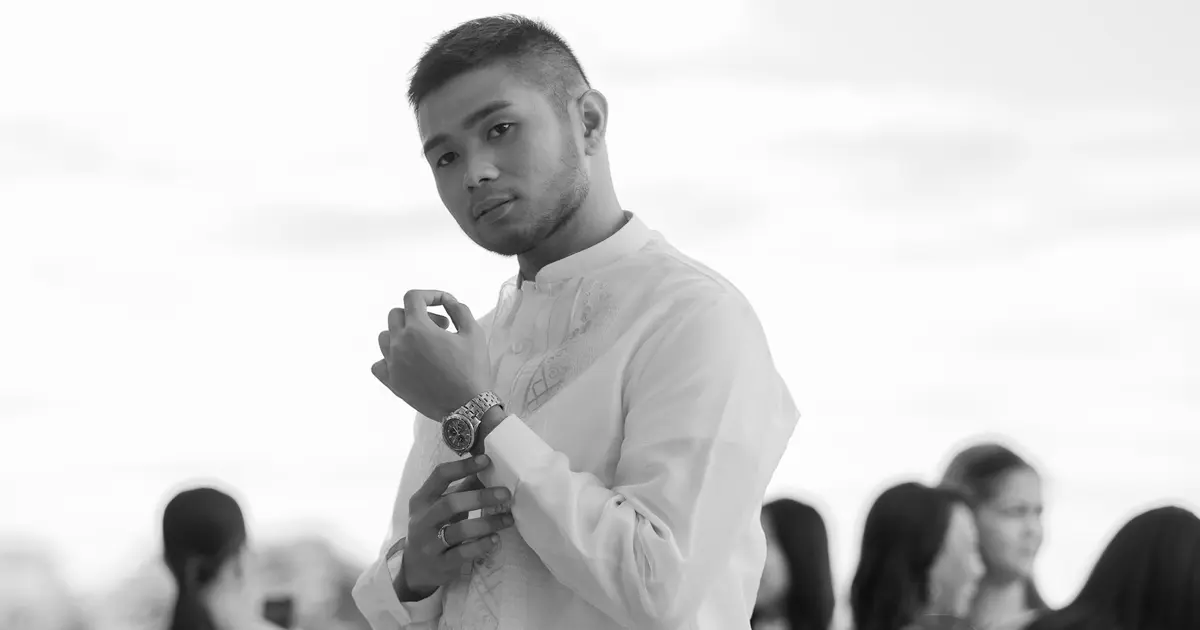
Guests
A Filipino wedding usually has a dress code. For guests, white and its various shades are off-limits (unless requested by couples) because that color family is solely for the bride.
Black, metallic tones and sparkly hues are also highly discouraged. Those wearing it come across as overly flashy. Neutral colors, like blush, taupe, or light blue, are the best bet.
Filipino Wedding Traditions during the Ceremony
Regardless of themes or motifs, all Filipino nuptials have two commonalities: community and family. Both parties heavily involve themselves in the wedding preparation since Filipino culture values both.
Below are some traditions people still practice today:
1. Cord and veil
The godparents lead the Filipino wedding tradition of wearing the cord and veil.
During the ceremony, they’ll drape a lace veil over the groom’s shoulder and the bride’s head to symbolize their oneness. They then wrap a yugal (ceremonial cord) around both in a figure-eight pattern, symbolizing an eternal bond of loyalty.
2. Rice showers
Rice has significant symbolism in a Filipino wedding. This crop is sacred because it’s one of the country’s staples.
A rice shower symbolizes people’s well-wishes. This usually happens when the couple exits the church. Some regions do this shower twice, with the second round happening at the reception venue or the newlywed’s homes.
3. Money dances
In some Filipino weddings, the first dance involves people pinning money on the newlyweds’ clothes. According to traditions, this practice will help couples start on a good financial note.
4. Rice cakes
The wedding host serves the newlywed couple a small plate of kalamay (sticky rice cake) and a generous pile encased in palm leaves, which they'll auction.
Guests and godparents will shell out money as other bidders playfully goad them to make donations in exchange for the wrapped rice cakes.
What do sticky rice cakes have to do with Filipino weddings, you ask? Per tradition, they symbolize a couple sticking together through the good, bad, and ugly times.
Best Filipino Wedding Dishes for a Reception
Filipinos love a good feast, especially at momentous events like weddings. Don’t leave these crowd favorites out of your reception menu:
1. Lumpiang Shanghai
Are you looking for crowd-pleasing Filipino dishes for wedding parties? Lumpiang Shanghai is a no-brainer.
These bite-sized rolls pack tons of flavor with their delicious fillings. Serve them with sweet chili dipping sauce for an extra kick.
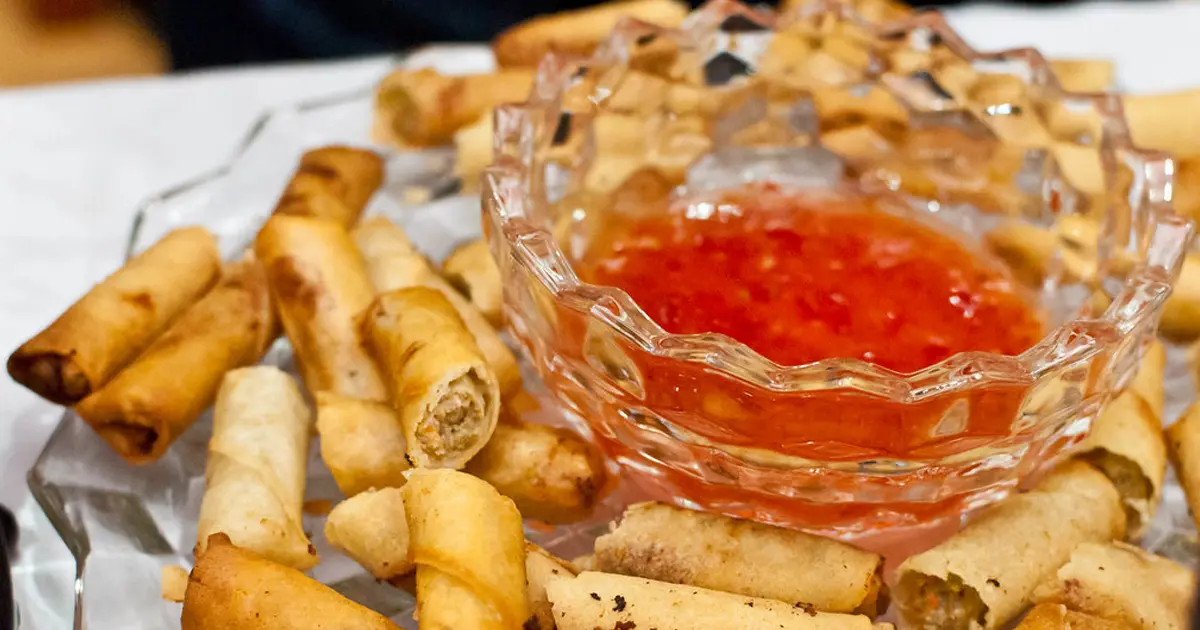
2. Lechon
A big event like a wedding calls for a huge centerpiece. For many Filipinos, it’s lechon. This iconic roasted pig offers the best of both worlds: crispy skin and tender, flavorful meat.
3. Pancit
Noodles are a staple of Filipino cuisine. Pancit is always a hit at parties because of the harmony of the noodles, sauce, and flavor additions.
Why? The noodles symbolize a long life ahead. While you aren’t required to believe in superstitions, there’s no harm in serving a delicious batch of this Filipino classic.
Planning a Filipino-themed Wedding
Achieve your dream wedding in the Philippines. Here are some tips for planning your Filipino-themed wedding.
1. Book a good date.
Per a Manila Bulletin report, the Philippine Statistics Authority (PSA) divulged that December is the most preferred month for weddings. In 2022, around 55,599 registered marriages happened in December. This accounted for 12.4% of the total marriages.
If you want your ceremony to have a little holiday spirit, try going for a December wedding.
If you don’t want to keep up with the holiday rush, June is also a good choice.
2. Pick your wedding vibe.
Let’s say you want a modern Filipino-themed wedding. That’s great! But another question arises: what will your wedding’s vibe be like?
You may think the theme and vibe are the same. However, they’re different. The latter is the tone-setter.
For a modern take on a Filipino-style wedding, go for a simple and intimate vibe. To achieve this, keep your guest list small.
3. Secure an appropriate venue.
A Filipino wedding calls for a setting that matches that aesthetic. Book a place that packs in historical elements. Think grand staircases and fancy lighting fixtures.
Try checking heritage venues near you for the best results. Or, you can try more attainable choices, like restaurants and function rooms.
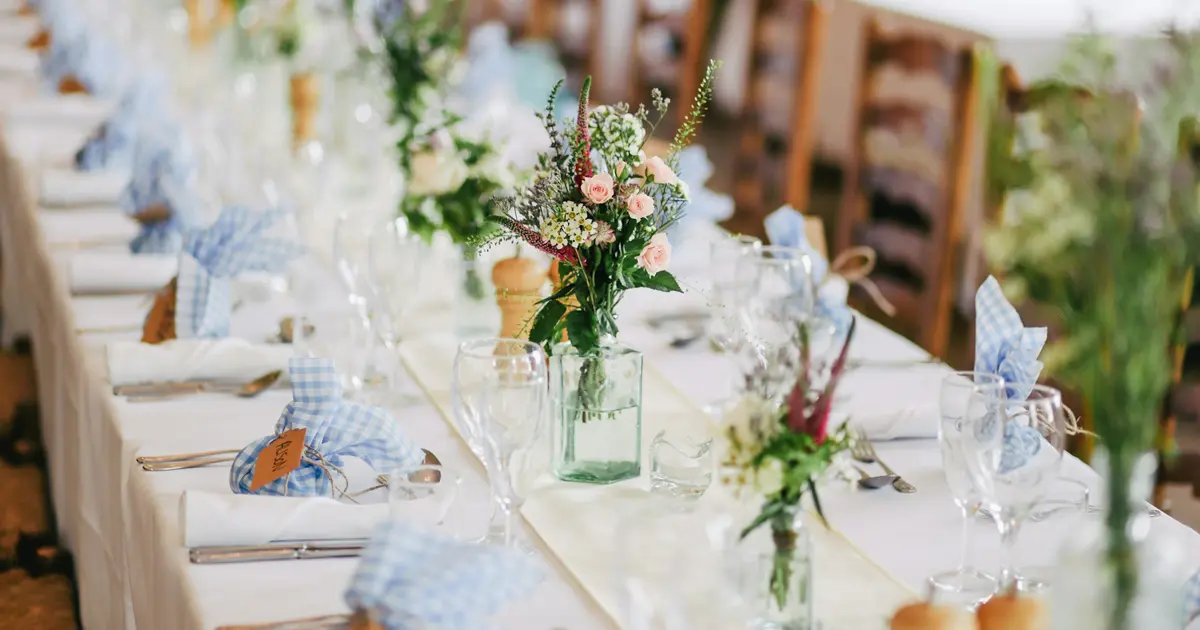
4. Be intentional with the decor.
Your theme will be meaningless if the details don’t match the description. Bring it to life with Filipino wedding decorations. Go for rattan decor, pearl accents, and dried anahaw pieces. If you don’t want to stress yourself out with the details, hire a Filipino wedding planner to help you.
If you’re getting married to a Filipino partner, we recommend incorporating her country’s elements and traditions into your celebration. Doing so will make for an extra special day for you both.
References
BusinessMirror. 2015. “Getting hitched the Filipino way.” BusinessMirror.
https://businessmirror.com.ph/2015/06/20/getting-hitched-the-filipino-way/ .
Pascual, Jose. 2023. “Hidden Voices: Re-examining the Conquest of the Philippines.” Perspectives: A Journal of Historical Inquiry 50.
https://www.calstatela.edu/sites/default/files/hidden_voices.pdf .
Leyco, Chino S. 2023. “PSA Reports December as Filipinos’ Most Preferred Month to Get Married.” Manila Bulletin, December 2, 2023.
https://mb.com.ph/2023/12/1/psa-reports-december-as-filipinos-top-choice-for-getting-married-1 .












